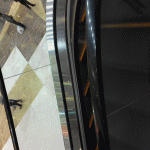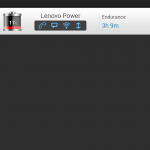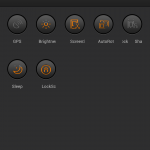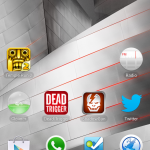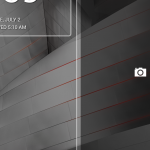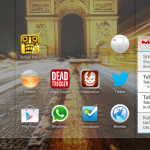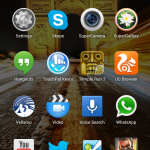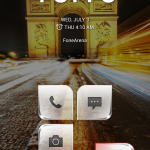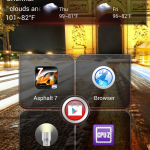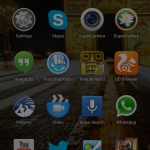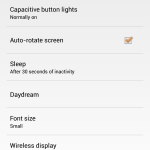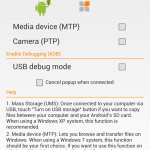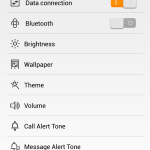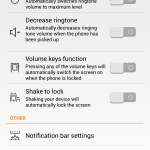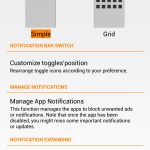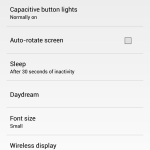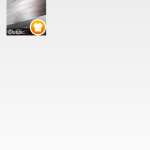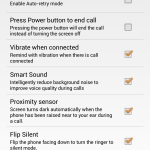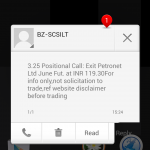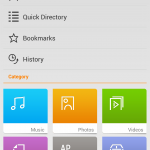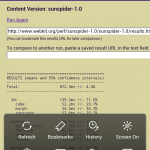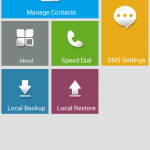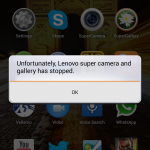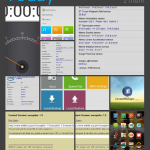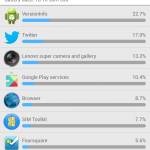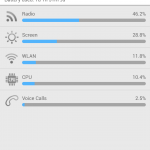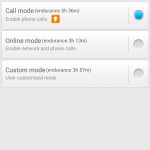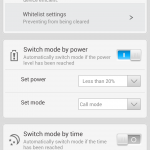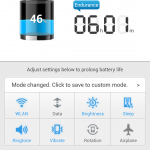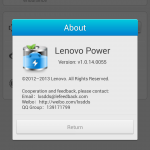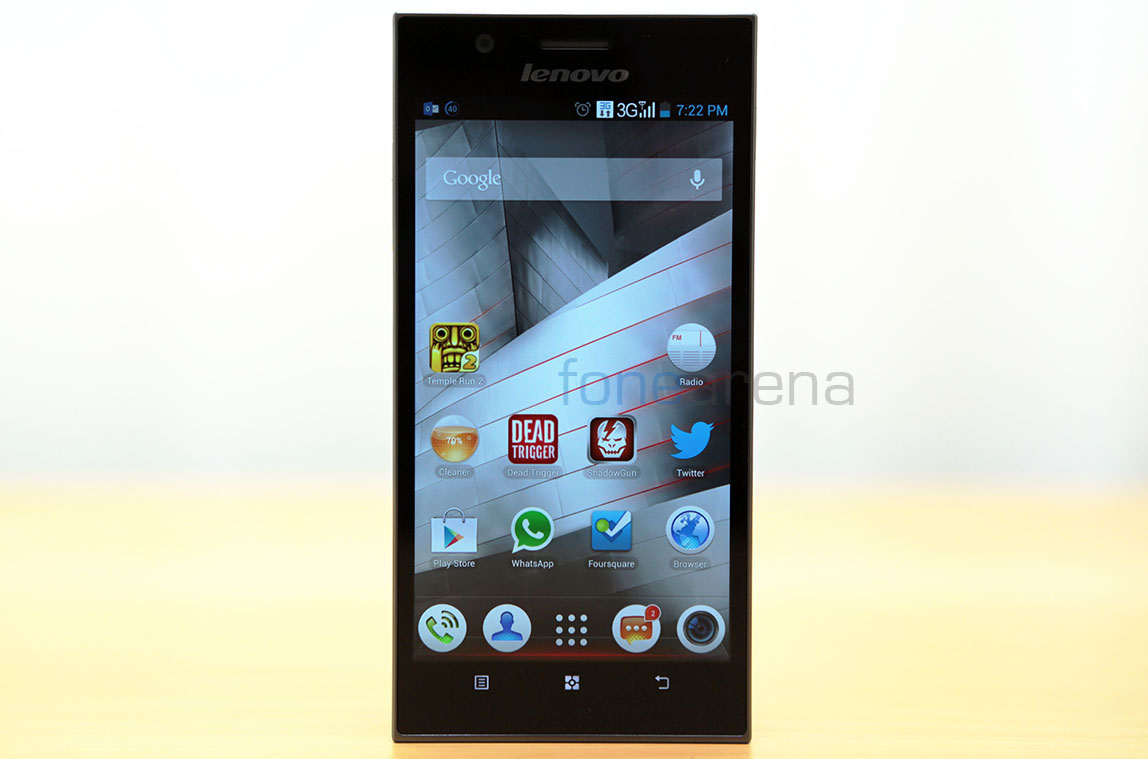
Lenovo, a leader in the PC industry, has been widely known for its well built notebooks and other PC devices, but at the same time, has not been well known for its smartphones. In an effort to change that image, every company needs a hero device that is the flagship of its portfolio, to induce that halo effect on its other smartphones. Launched at the Consumer Electronics Show earlier this year, the Lenovo K900 is poised to be the flagship device that Lenovo hopes to lead its portfolio. The device landed in India just a few weeks back and we had already given our first impressions of it earlier. So, does it live up to the flagship status? Is it a worthy phone at a price of Rs. 32,999? Lets find out in the complete review below.
Box Contents
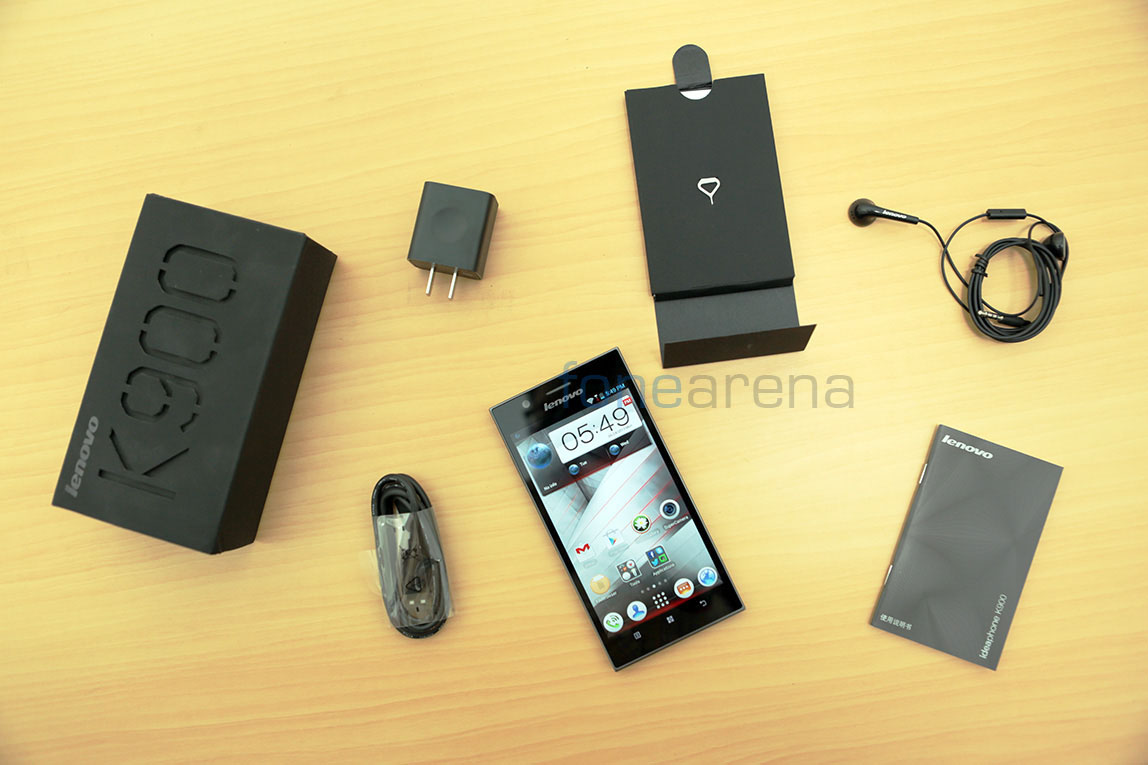
The retail box of the Lenovo K900 comes with all the usual accessories. As we noted in our unboxing post earlier, the charger, the micro USB cable, the poorly built headset and the SIM ejector tool were the accessories present in the box alongside the user manual. You can check out our unboxing video for a quick look at the retail box and the phones.
httpv://www.youtube.com/watch?v=vnwXRcLlff4
Video Review
httpv://www.youtube.com/watch?v=B0to8SDqKAQ
Design, Build and Ergonomics
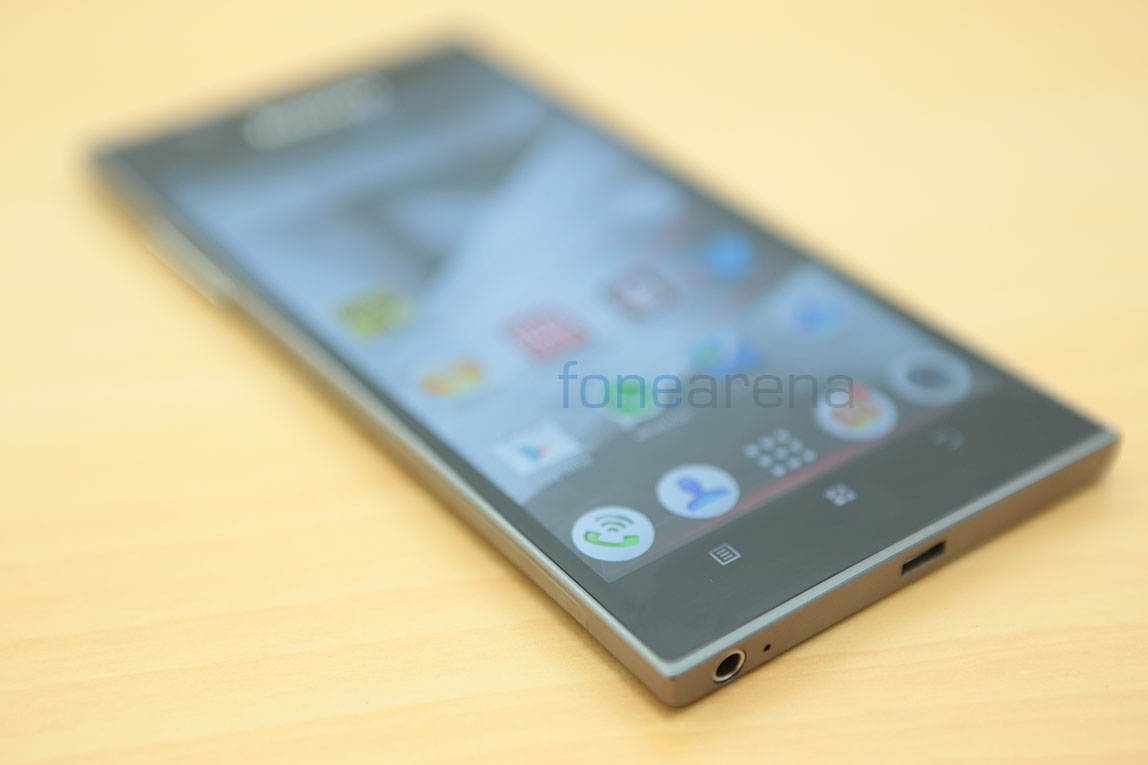
The K900 has a really striking design. Unlike other devices, the K900 is very flat and has a lot of straight lines, in fact it is as straight and flat as a ruler. However, to accommodate human hands, the back, with respect to the edges, is slightly curved while the top/bottom and the sides are flattened. The front is completely dark, with the bezel blending into the display quite nicely, making it look like a dark slab from the front, with the Lenovo logo shining alone. Impressively different design from Lenovo here.
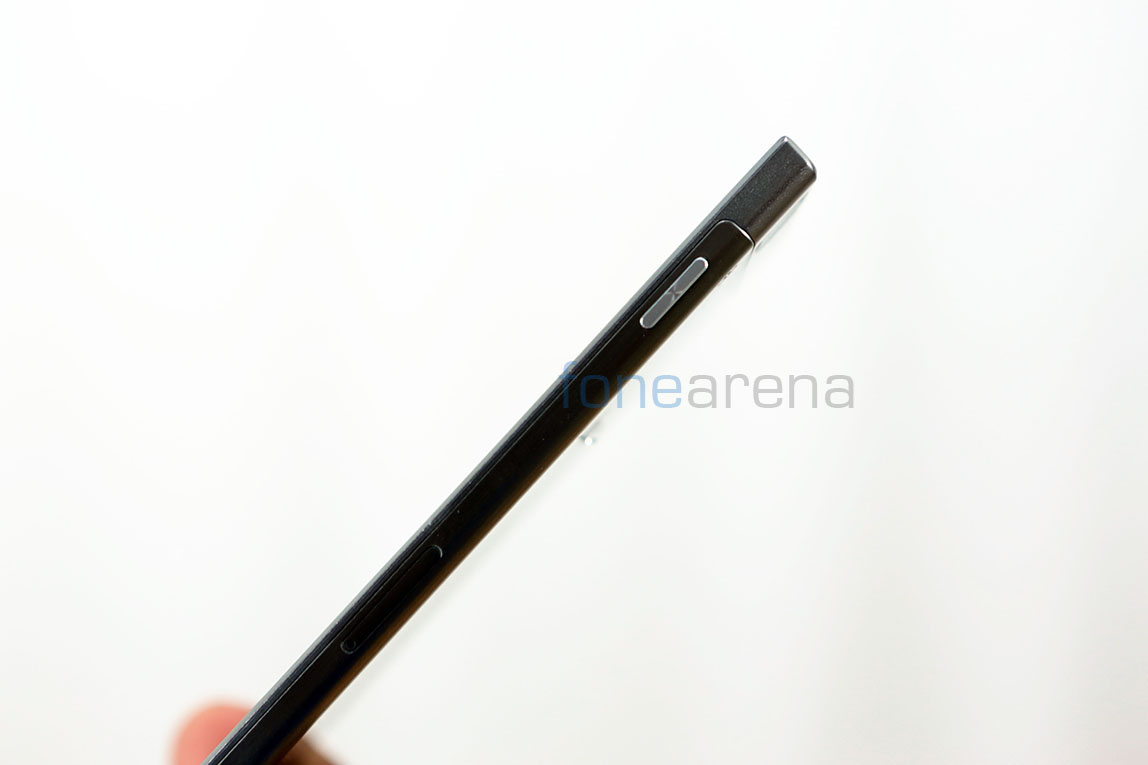
The body is primarily made of two materials, the overall polycarbonate enclosure and the brushed stainless steel back. With visible screws, the back looks machined and industrial, and the matte polycarbonate plastic which provides framing support, covers the other parts of the device. The brushed stainless steel look is very nice and is non-magnetic, while the sturdy polycarbonate plastic has a subtle texture to it, which makes it slightly glossy. At just 6.9mm of thickness, the device is insanely thin but thankfully the materials make it solid and not flimsy. So, overall the build quality is really nice, but we do have some complaints, which might crop up over the course of usage. The lenovo logo on the back is disappointingly just a sticker and succumbs to wear and tear over normal usage, and the stainless steel back is open for abuse over the long term. It gets scuffed up quite easily and marks start showing up on the sides, with the disappearing brushed metal pattern.
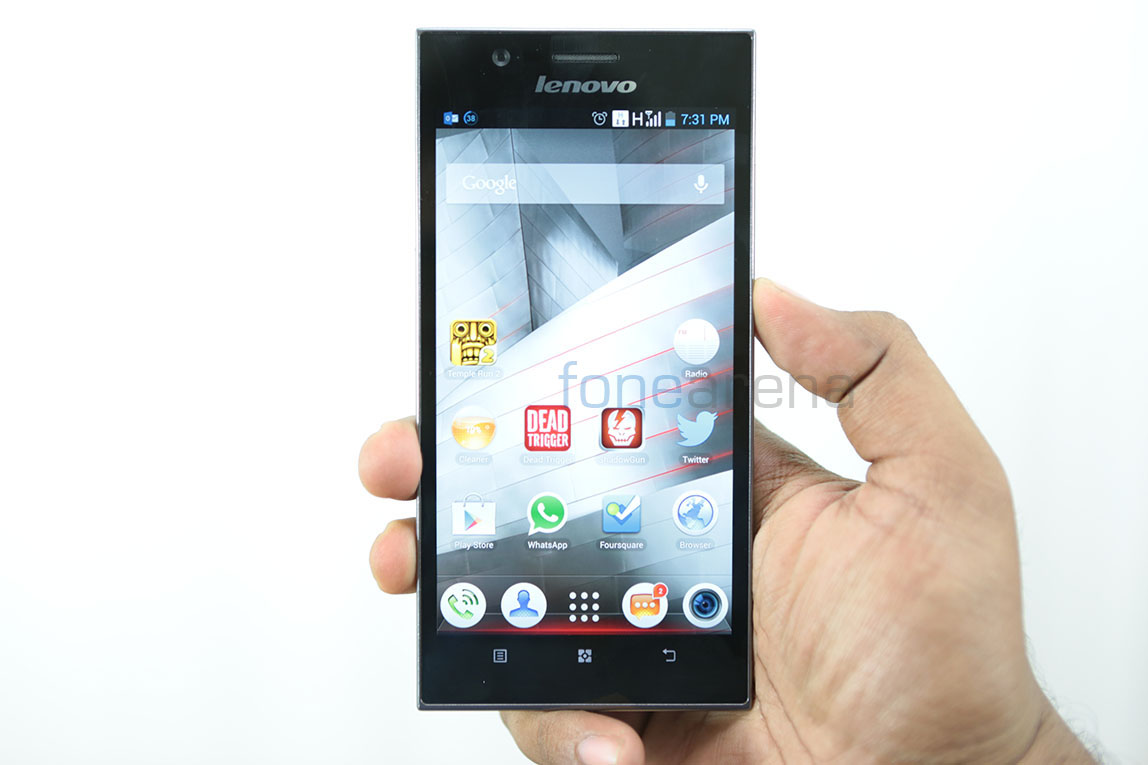
Being a huge device with a huge screen, the K900 is kinda unwieldy to use for normal hands. Even for large hands like mine, it was ‘above the limits’ huge. But thankfully the thickness helps a lot in forgetting about the monstrosity of the device, and very surprisingly, the 162g of weight doesn’t feel bulky at all, probably due to equal weight distribution over a large surface area. So, yes, while the device might be solidly built, there are some wear and tear issues and is still unwieldy to use for normal hands. Lets take a walk through of the hardware then.
Hardware Walkthrough
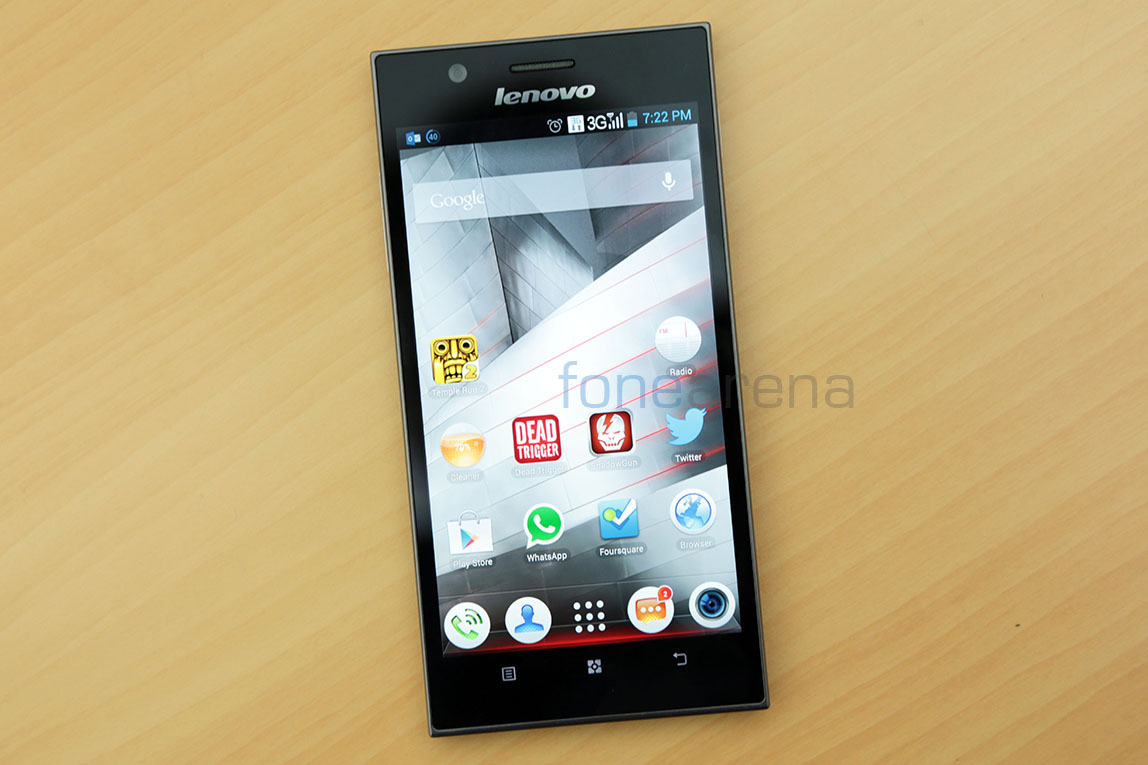
On the front is the massive 5.5 inch full HD screen, and is completely covered with a single sheet of Gorilla Glass 2. While the glass is decently finger print resistant, it is prone to scratches unlike what the myths lead you to believe.
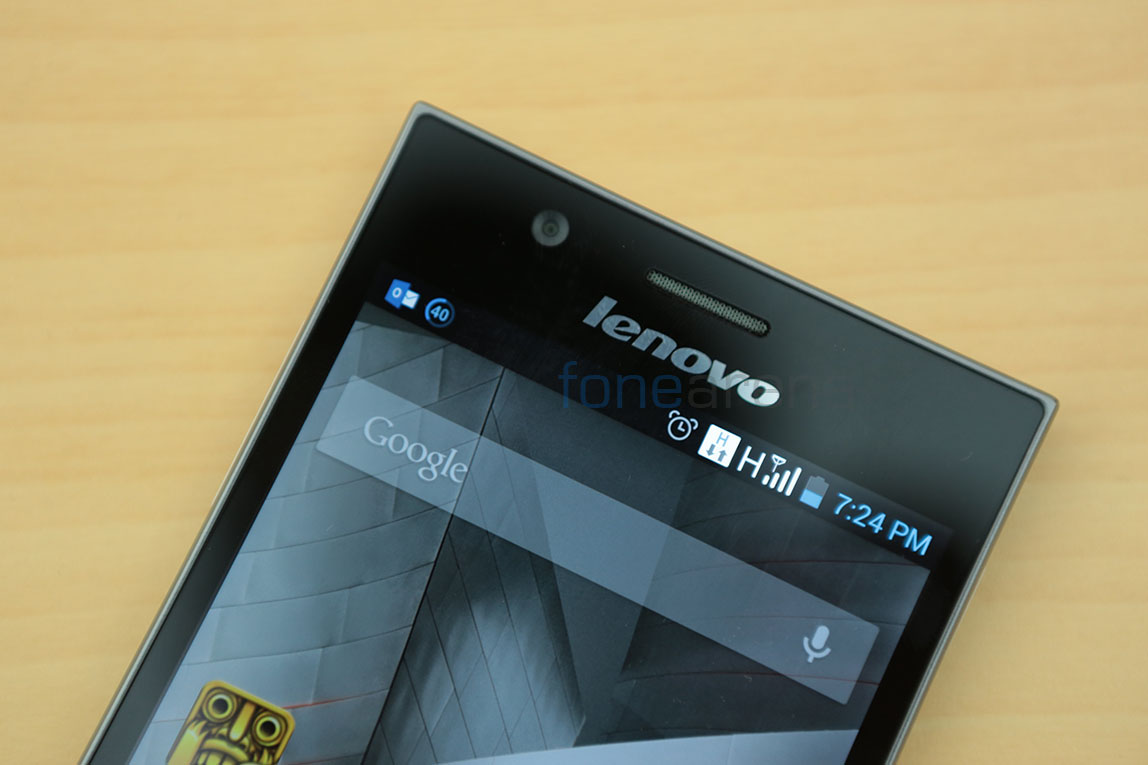
There is a cut out for the grilled ear piece on the top, which sits alongside the 2MP 1080p wide angle front facing camera and the usual pair of sensors nicely hidden into the dark bezel. There is no notifications LED on this phone, and we kinda missed it badly.
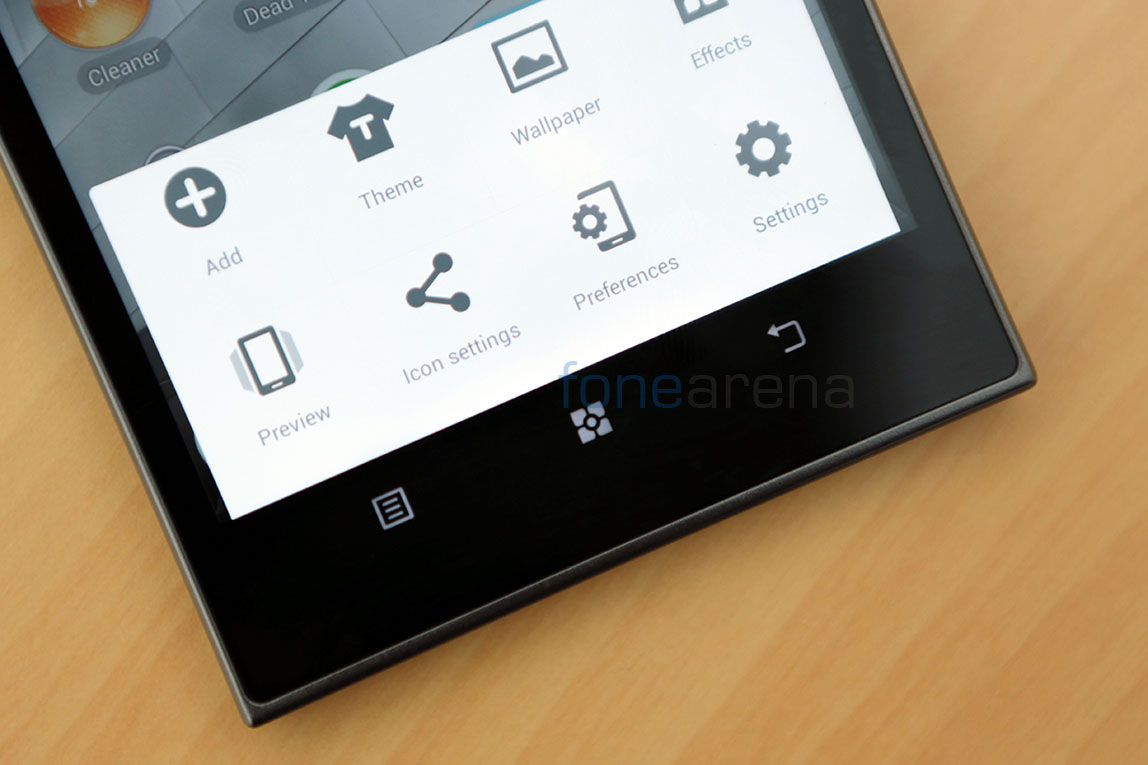
Below the display are the capacitive Android shortcut keys, which are different by design as well as functionality. The home button is designed with Lenovo’s UI in mind, and on long press it opens up Google Now while the menu key, which is normal by design, opens up the multitasking screen on long press. The functionality is quite the opposite on other devices. The back key though remains the same, in design as well as function.
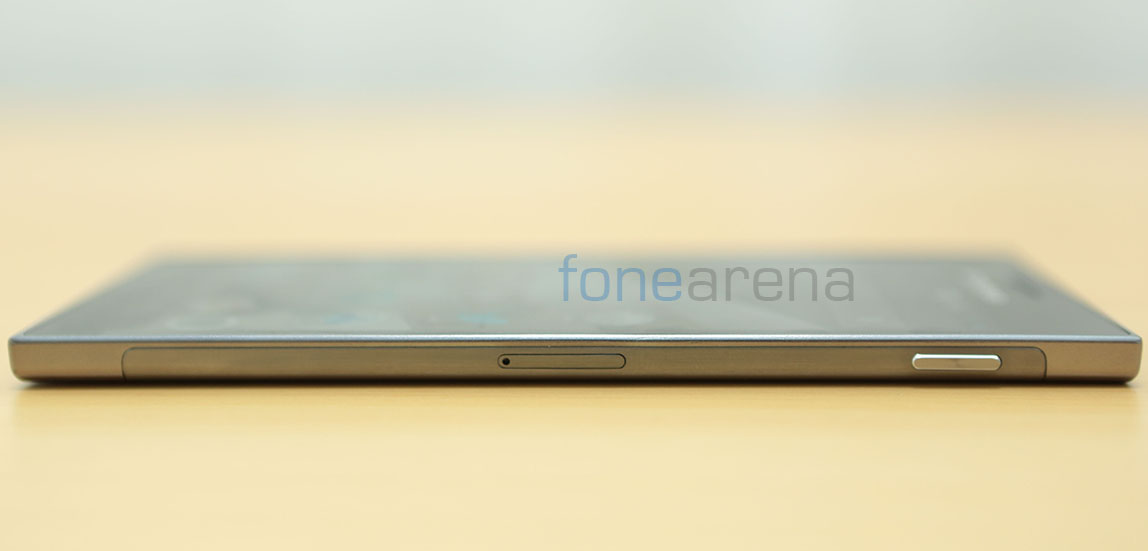
Over at the right reside the power/lock switch, which is lathed with a rounded texture, and the micro SIM card pull out tray that requires the in-box ejector tool, or something similar, to pry open.
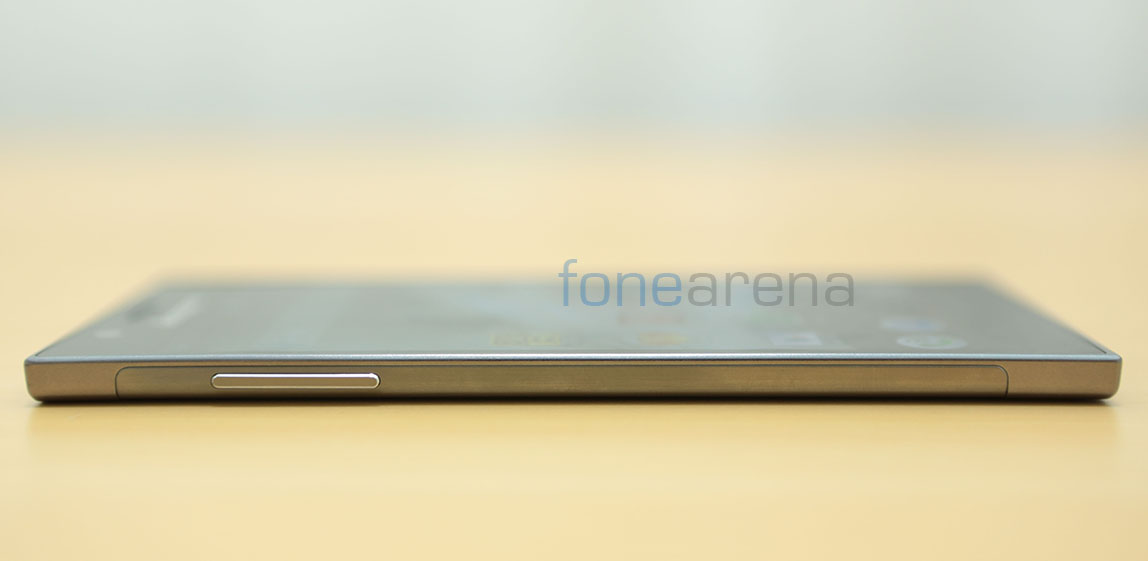
Over at the left, the stainless steel volume rocker does not sport the same lathed design as the power/lock switch but is considerably matte and long enough for easy reach. On the left side as well as the right side, one can clearly notice the demarcation between the polycarbonate frame and the stainless steel back.
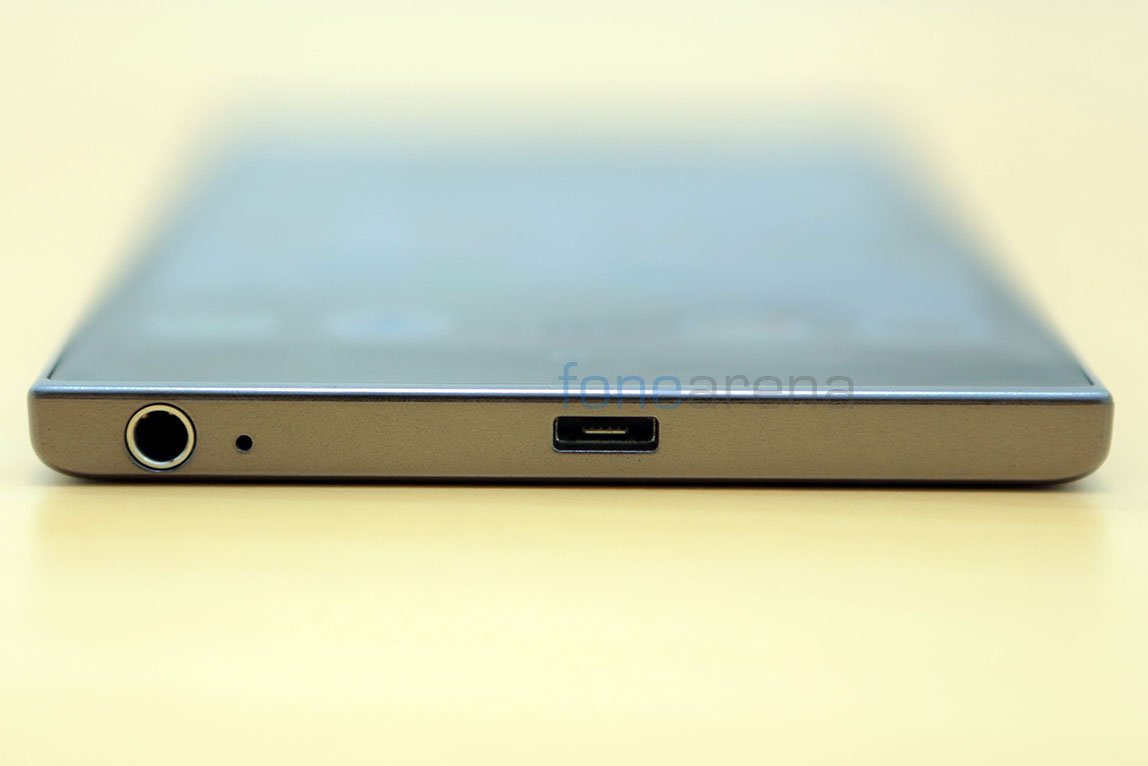
While the top is left completely empty, thanks to a good design decision, the bottom is populated by the 3.5mm jack, the primary microphone for voice calls and the micro USB port that has USB OTG support.
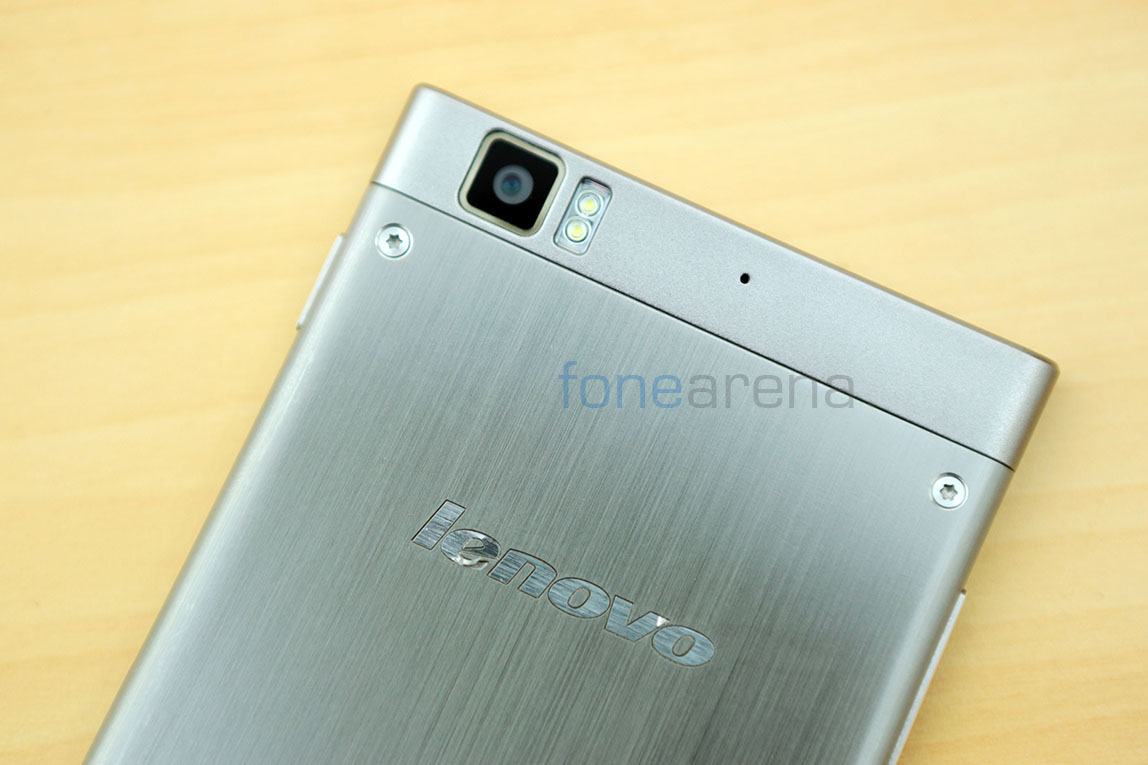
The 13 megapixel camera unit, along with the dual LED flash and the secondary microphone, are housed in the polycarbonate plastic part, on the top. The Lenovo logo and the Intel Inside branding are affixed on the stainless steel back, with the visible screws that are presumably for opening up the device for repairs and not just aesthetic design.

The loudspeakers with a large grill split into two, is present on the bottom part of the polycarbonate plastic. That’s it for the hardware walkthrough, lets jump into the details then.
Display
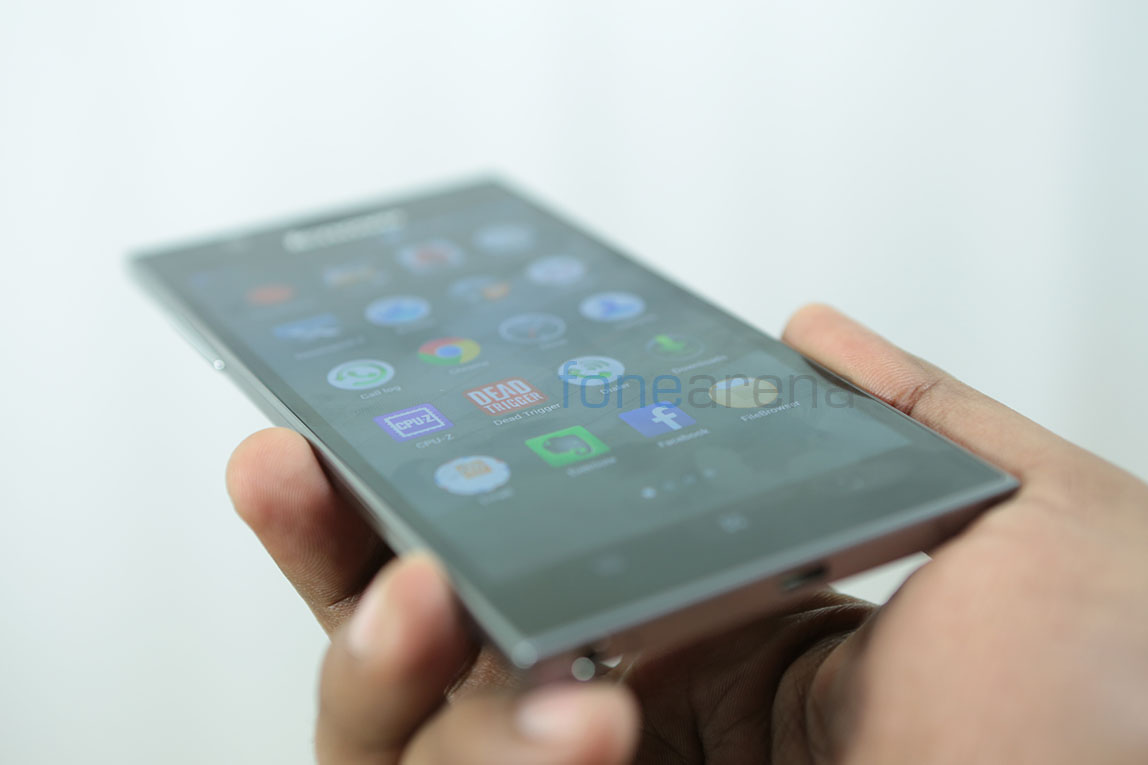
The massive 5.5 inch IPS display comes at a resolution of 1920×1080 and has a 400+ PPI pixel density, making it one of the highly impressive screens we have seen recently. While it is no match for the Oppo Find 5’s display or even the Samsung Galaxy S4/HTC One, the display holds its own in all the important aspects. The display has great viewing angles and the brightness/contrast is right up there with the best. Colour reproduction is great but the blacks are not as black as one would want, may be AMOLED displays have spoiled us too much. As far as LCDs are concerned, it is not too bad, but certainly blacks show up as grey in full brightness. The outdoor visibility was predictably bad, with the ambient light sensor forgetting to do its job outdoors, while being over aggressive in lowering the backlight indoors. Resorting to full brightness made things a bit easier though.
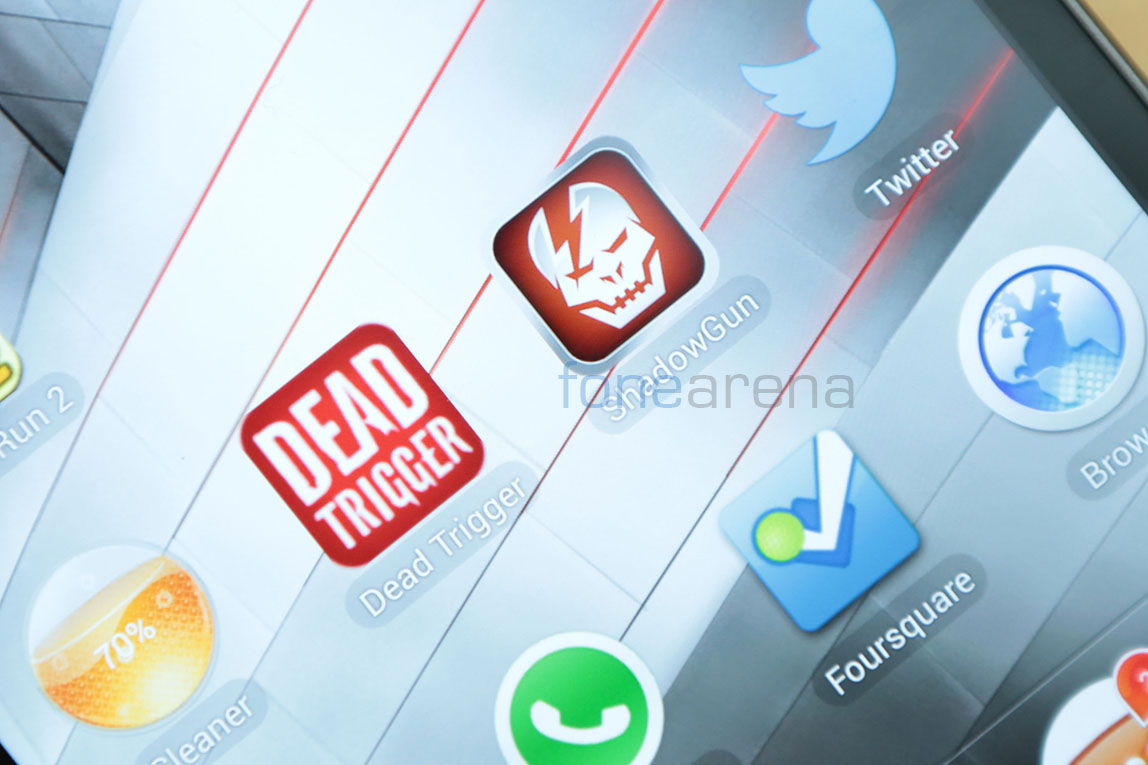
In terms of consumption, the display was really good for watching videos and playing games. The form factor seemed really comfortable for most types of media and text consumption, and especially browsing which was really improved thanks to the high PPI display. Overall, a really good display, only slightly hampered by the over aggressive ambient light sensor, which could be fixed in software honestly.
Camera(s)

The Sony Exmor RS sensor has found its way into yet another smartphone. Yes, the 13 Megapixel unit on the back is a 1/3.06″ Sony Exmor RS stacked CMOS sensor, just like the Oppo Find 5 and the Samsung Galaxy S4, but the similarities end there. The lens unit coupled with the sensor is something different and exciting. The K900 sports the world’s fastest lens to date, with an aperture of f1.8 promising good low light performance. With some really good specifications backing it up, we took the camera for a spin in every condition possible and these are the untouched camera results in full resolution –
Daylight
Low Light
As you can see, the daylight images are really detailed and are of high quality, and the low light images do not disappoint either. The f1.8 lens really helps in improving the ISO performance, with some shots getting as low as the 300s even in low light conditions, but the shutter speed was quite low too. One small thing we noticed though, is the fact that all the images are, by default, a little bit over sharpened.
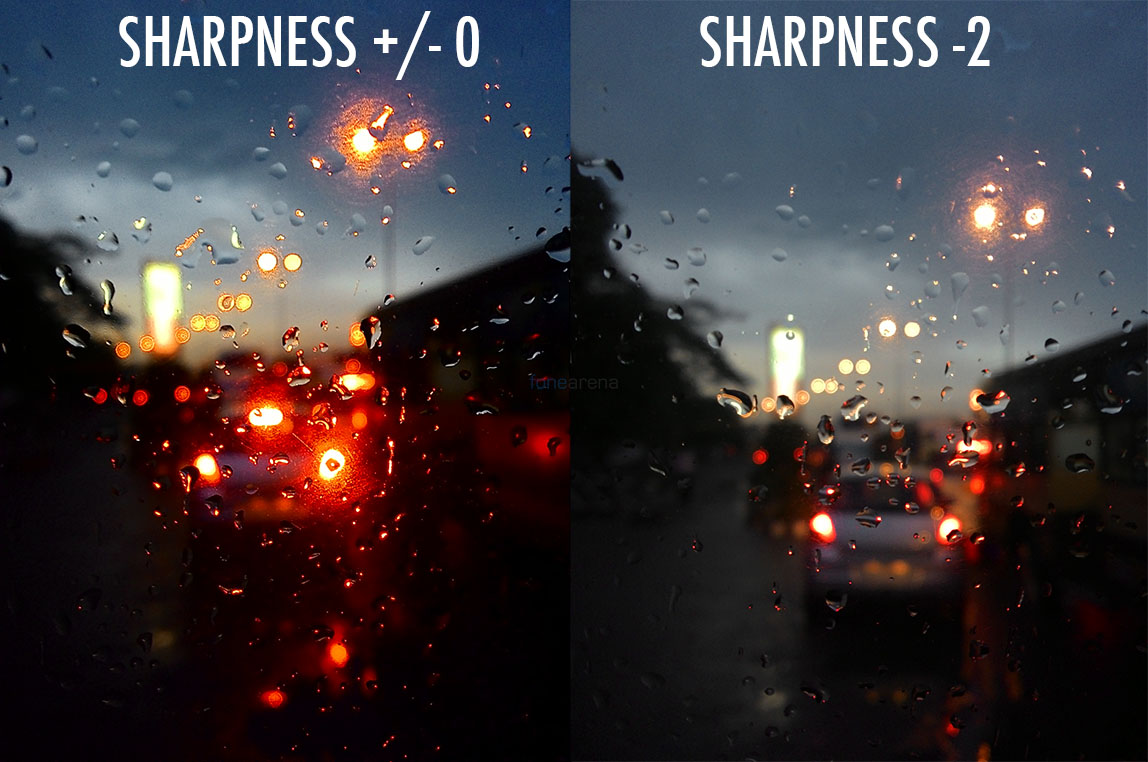
Here is the difference between a picture in (left)normal sharpness and (right)after setting the sharpness to -2. It was also disappointing to note that the dual LED flash was useless, as it provided dim photos with a bluish tinge, and was easily worse than the pictures without flash. If you had keenly noticed, some low light samples above were actually of just 5 megapixel resolution. Those images were taken in the “Weak light” mode of the camera and we think that there is some interpolation and post processing going on here, as evident from the smoothening artefacts of those images. So, yes, there are many useful modes in this camera. We quite likened to the two modes, “Weak light” and “HDR backlight”.
The K900 joins the ranks of the Oppo Find 5 for having a HDR output that is distinguishable enough from a normally exposed picture. The HDR backlight mode, as it is called, is also just 5 megapixels in size and manages to do really well. As you can notice from the images below, the difference is significant and impressive. Samples –
HDR
In addition to the several modes, there are also these things called “Extension lenses” which are pretty much similar to what other companies offer on image post processing. You get scalado remove, a group shot with face changing abilities, a normal GIF maker and a Magic GIF maker, a la Cinemagraph on Nokia Lumia devices. Here are some GIFs that we made, both normal and in the “Magic GIF” mode –
In terms of video, the K900 can record 1920×1080 videos at 24 fps, and the quality seemed really good. Encoded using the H264 MPEG4 AVC codec, the output file has the .3gp extension, and records stereo audio at 48KHz using the MP4 AAC codec. The audio quality too was really good thanks to the secondary microphone providing additional stereo input along with the primary. The low light performance was mushy, but acceptable despite the focus hunting. Here are a couple of video samples in day light as well as low light –
Daylight
httpv://www.youtube.com/watch?v=Le5X1Qn7Qb0
Low Light
httpv://www.youtube.com/watch?v=D474XI6gAjg
The video mode doesn’t have that many special tricks like the stills mode, but has the option for “EIS” – Electronic Image stabilisation. This works just like software stabilisation, which works by cropping the image to compensate for the shake. Here’s a video sample to demonstrate EIS –
EIS Video Sample
httpv://www.youtube.com/watch?v=eM4MOpUAyoA
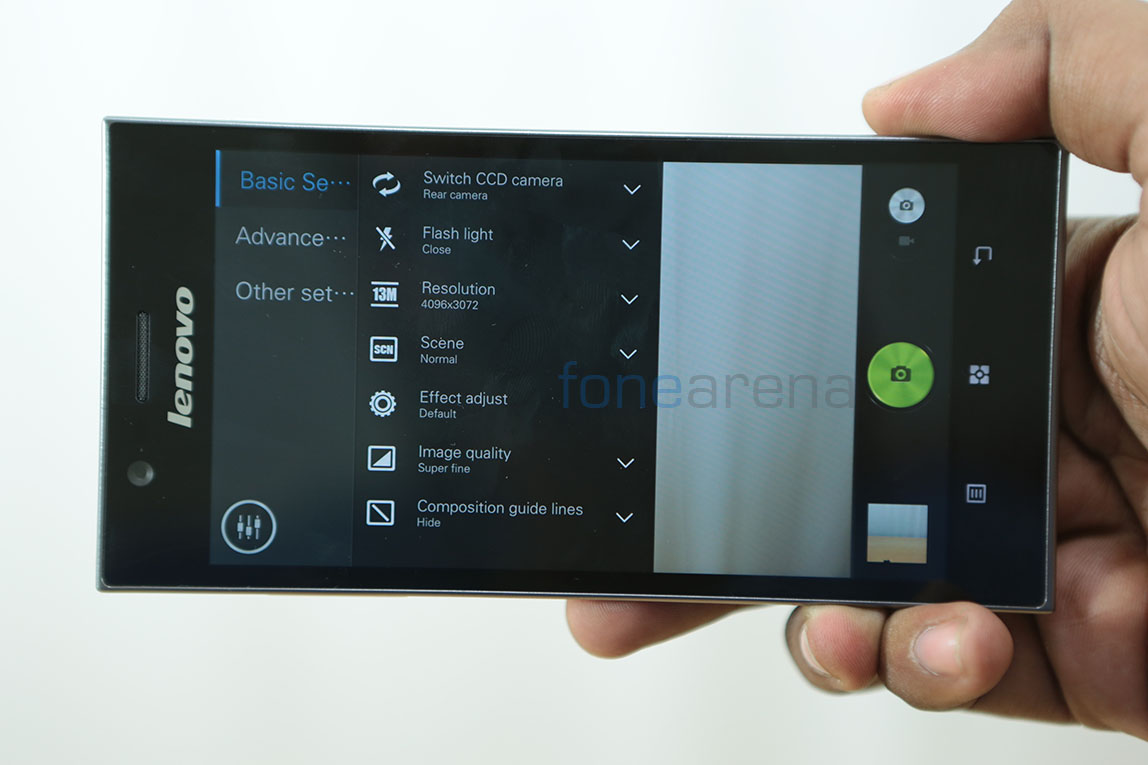
The camera app on the K900, called the “Super Camera” is feature packed, and has a lot of options. With in built filters and the aforementioned modes, it works quite well. Here is a complete demo of the UI, with the above samples thrown in to provide a complete overview of the camera performance –
httpv://www.youtube.com/watch?v=pQQ9lXNZSfA
Internals and Performance
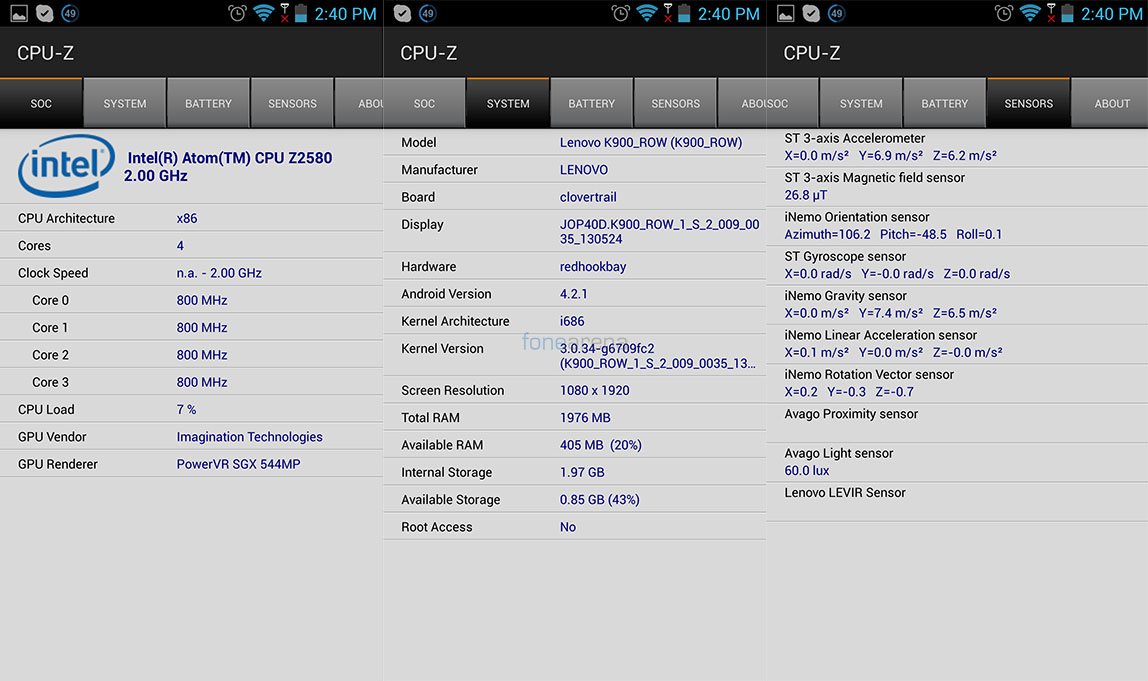
If you had noticed the clear indications in several images above, the K900 is powered by an Intel processor. it’s been a while since the original Intel based phone, the Xolo X900 that launched with a Medfield SoC. Times have passed and Intel’s mobile processors have gotten a generation older. The K900 runs on the latest CloverTrail+ SoC with a dual core Atom processor with turbo speeds up to 2 GHz and 4 threads(Hyper Threading). Powering the graphics is the Imagination Technologies’ PowerVR SGX 544MP2 chip, which is clocked at 533 MHz, specifically for this chipset. Delving into the technical details for a bit, the x86 processor has 1 MB of cache memory and is developed using the 32nm fabrication process. With Medfield, Intel announced support for Android with several emulation layers in place for Dalvik VM support and additional power management specifically tailored for the operating system and that stays true for the Z2580 too. The base clock speed of the processor is actually 1.3 GHz and idles at 800 MHz under normal usage.
The performance of the phone is, as expected, blazing fast. At first glance, the launcher hampers the experience by slowing the phone down, but you see it particularly shine with games and processor intensive tasks like heavy internet browsing. But as far as benchmarks are concerned, the performance is not upto the mark of other high end processors in certain benchmark tests, but we think it might be due to lack of optimization as it was clearly at the top in some other tests. One problem we faced with respect to performance of the phone was over-heating. The phone rapidly heats up when stressed with intensive tasks such as games. We found it to crop up even when using the camera and during benchmark tests. While it was not apparent in tasks like camera and benchmarks, it was a hindrance while gaming. Talking of the benchmarks, here is a glimpse of some of the tests we conducted.
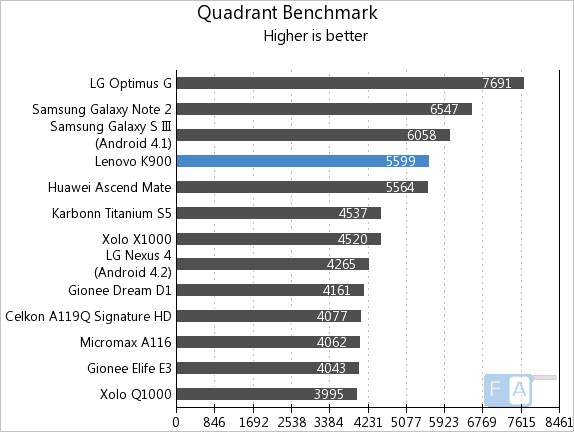

You can take a look at the other benchmark tests here and here is a gaming performance overview, in case you are interested to see how games perform on the K900 –
httpv://www.youtube.com/watch?v=VZ6Lg9nvTz4
Regarding the games, we usually install and test Modern Combat 4 from Gameloft in our gaming overview, and we tried the same for the K900, but noticed that it failed to open up, and simply went on a loop. It didn’t cause any harm to the OS and could be just even minimised without any trouble, but the inability to open was something we had experienced with Asphalt 7 too, but it eventually worked. We researched the web for similar problems on the K900, but it seems like ours was an isolated issue, so just a heads up, check with Gameloft on the issues before buying Modern Combat 4 for the K900.
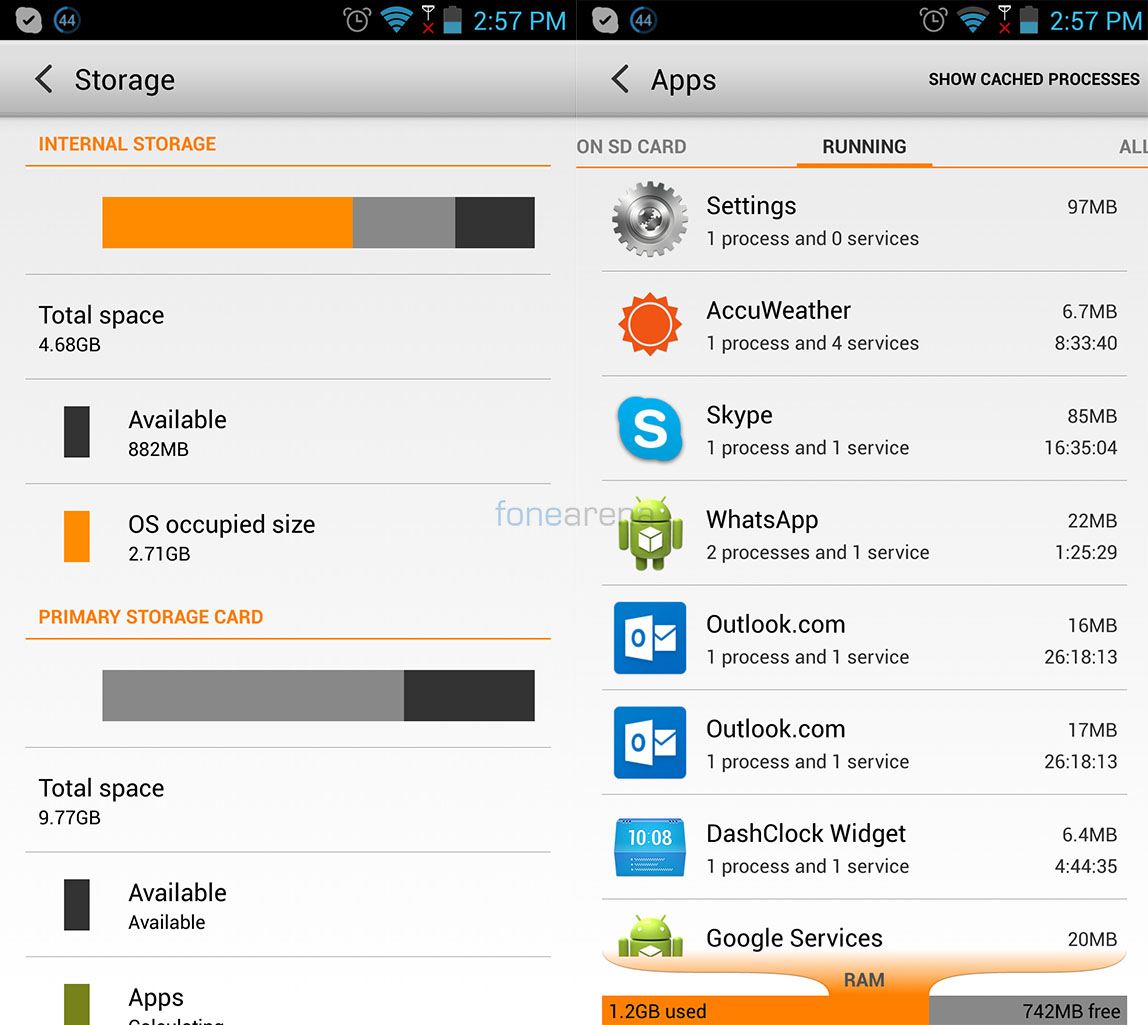
The device comes with 16 GB of internal storage, out of which, about 11.5 GB is available for the user. There is no micro SD card slot, which is a bummer because people with a huge music collection are going to be disappointed, let alone movies. The device also packs a total of 2GB of RAM out of which 1.97GB is available for the system. The default Lenovo apps like “settings” hog the RAM and after using a few more apps, it quickly fills up to 82% of usage, hence makes the device a bit laggy. But surprisingly, having replaced the launcher(default Lenovo launcher could have been a silent memory eater) with a 3rd party one, the performance was real smooth and indicative of the actual power of the Intel chip. So, overall, don’t be discouraged by the benchmarks or the launcher performance, it is certainly not indicative of the raw performance of the chip, since apps and games performed as well as other high end phones.
Connectivity and call quality

The connectivity of the K900 is handled by the Intel XMM6360 baseband modem. With HSPA+ speeds, the device performed well on our home network at optimal speeds and no dropped calls. The ear piece was loud and clear, and so was the loudspeaker. PC connectivity is powered by the micro USB port which can also act as a host, thanks to the USB OTG functionality. Other usual connectivity options include Bluetooth, WiFi b/g/n with hotspot and stereo FM Radio. Amongst the missing internals for a modern phone is a NFC chip or wireless charging, but we think they have been compromised for a thinner profile, which the phone has gladly achieved.
The call quality on the device was totally fine and did not disappoint us or the caller, however we did find ourselves always increasing or decreasing the volume for each of the calls, which was weird. The phone also boasts “smart sound” which is a noise cancellation algorithm that runs during the call, using the secondary microphone, which explains the irregular volume levels in each and every call. Also, the micro SIM slot on the K900 is hot swappable, so you never have to worry about restarting the phone after inserting the SIM card. With respect to sensors, the K900 does come with a compass and a Gyroscope. Overall, pretty stocked with connectivity options, but no NFC and Wireless charging.
Software
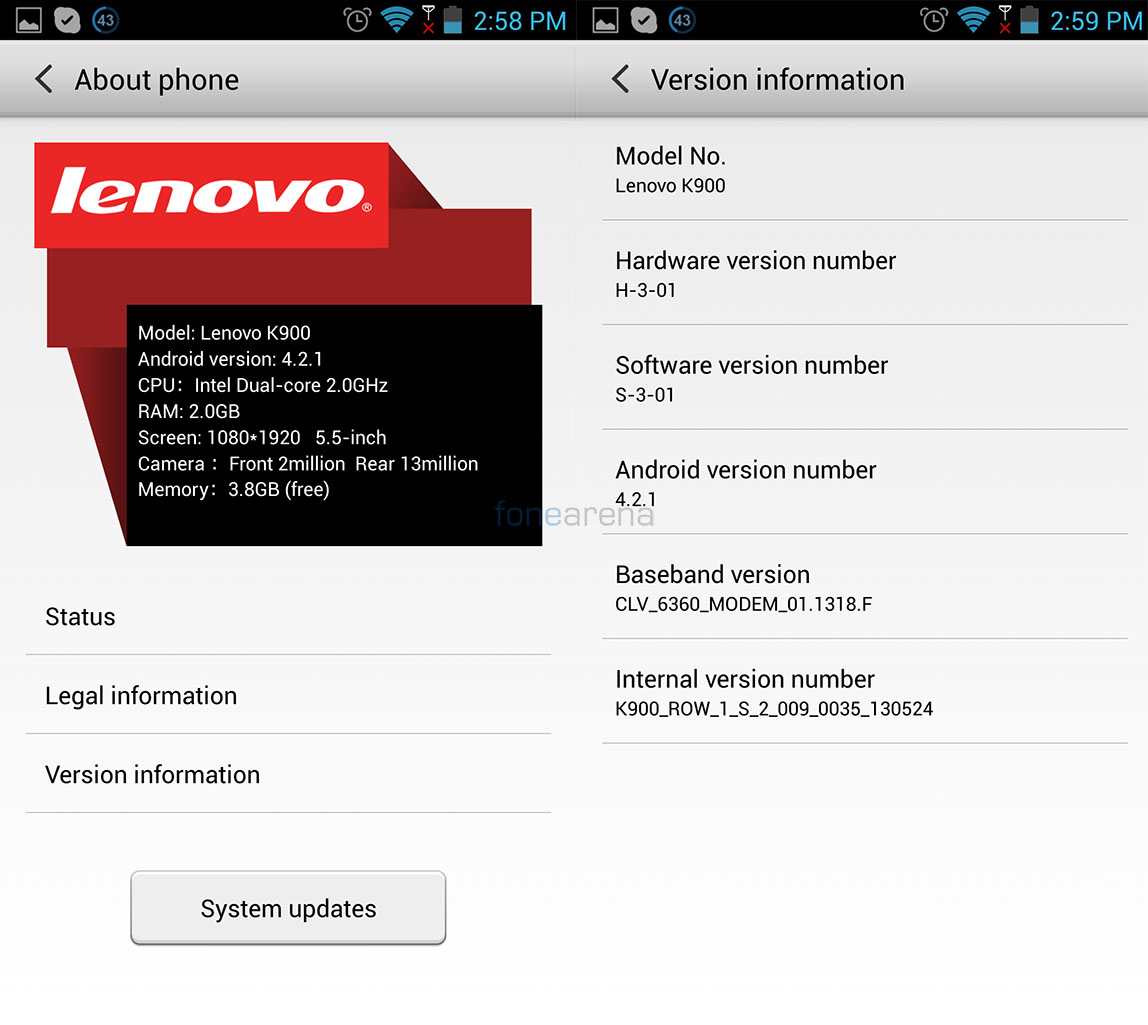
The K900 runs on Android 4.2.1 JellyBean, a dot version below the Nexus devices. It runs on a custom launcher from Lenovo, which is simply called the Lenovo “Magic Desktop”. The UI is heavily modified and frankly is distastefully done. Even the “loading/refreshing..” indicator has been modified to Lenovo’s own Lotus-like symbol, which stretches and contorts itself on several unsupported apps. The icons are all circular and have flashy colours, the widgets are ugly and some of the default apps are too pretentious. To walk you through some of the user interface elements, lets start with the lock screen.
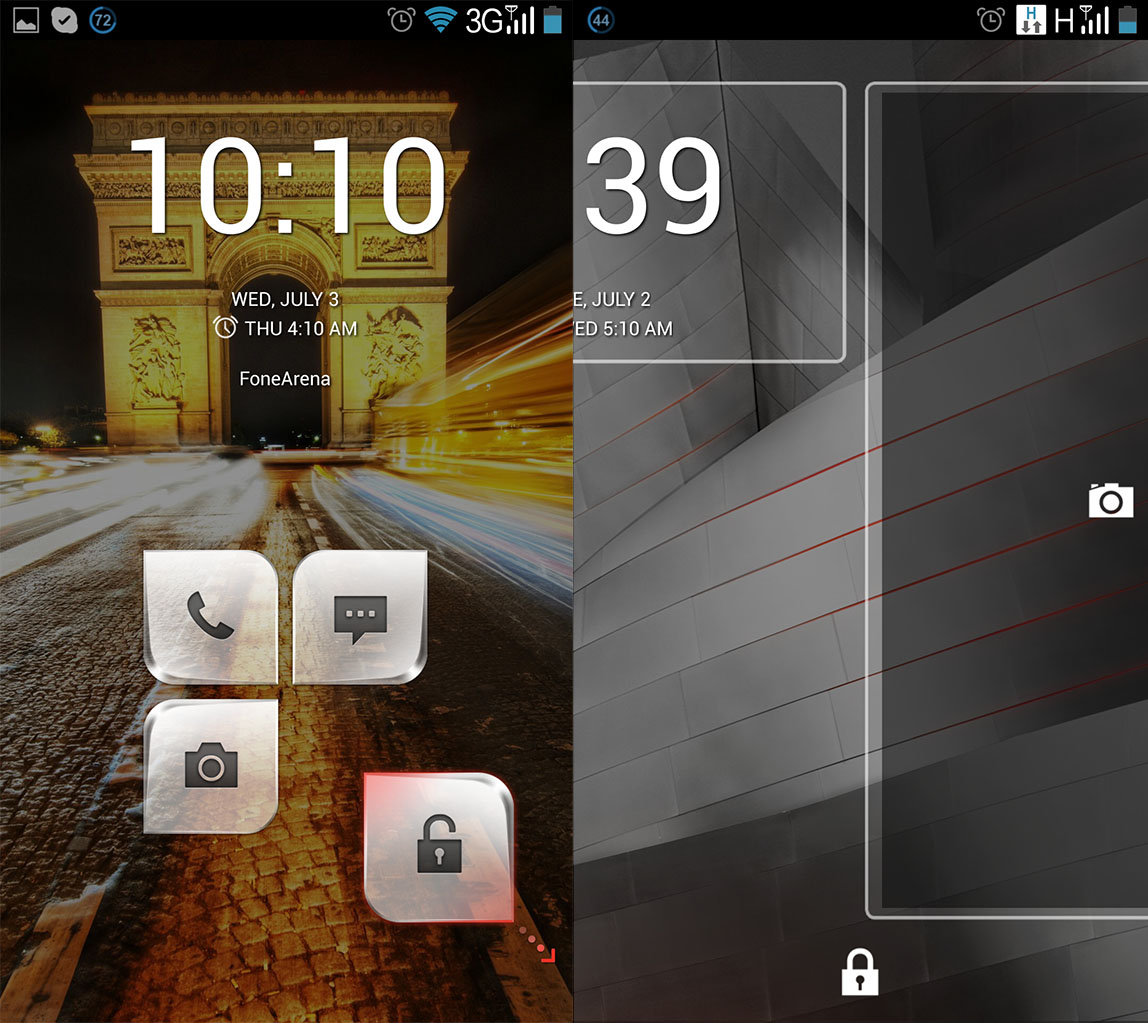
The lock screen has a lotus shortcut widget, with three other shortcuts for camera, calls and messages. It has a weird slide gesture in which you slide across in the diagonal and is not immediately apparent for some. There are lock screen widgets as a part of Android 4.2.2 and they work as advertised. Thankfully useful apps like Dashclock work like expected and makes the lock screen experience better than stock.
The home screen has a dock and app shortcuts/widgets like any other launcher, but adding a shortcut from the applications list is not possible unless selected from a list on home screen long press. That was a tipping point of our patience for the default launcher. The launcher also comes with very few widgets on long press, and provides us a list of widgets without a preview if we need to add more. The icons are bigger than usual and reducing the font size doesn’t help in scaling them down. The home screen as well as the applications list have plenty of “effects” options to fiddle with, so many that the customization freaks with a drive to bling everything will be easily appeased. However, there are indeed a lot of customization options for the home screen as well as the app list, which is much welcome.
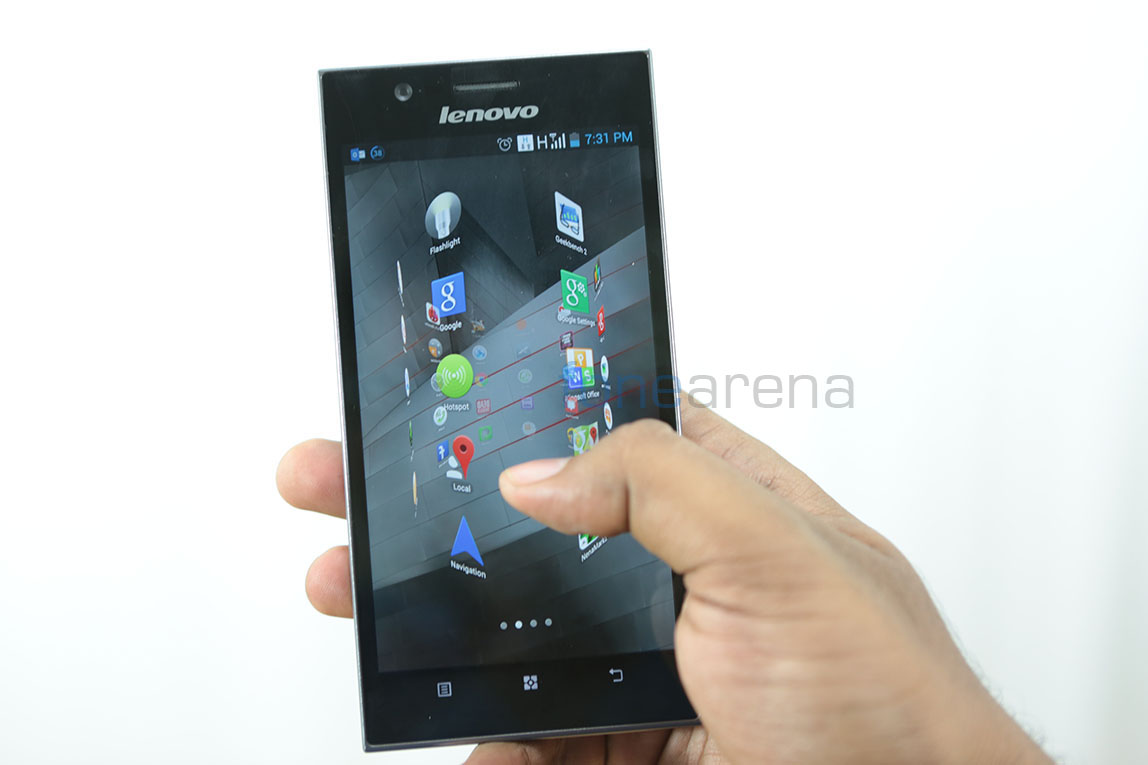
The notifications center has been revamped to support Android 4.2.2’s quick toggles, and there are a lot of different toggles on the K900’s custom skin. There can be two modes of presentation of the notifications panel, with or without a persistent toggle bar. SMS notifications come with a pop-up and quick actions, which proved to be very useful at times when it was working, but the problem is, it was not without its glitches. But we definitely appreciate the options, as it made replying or taking actions on SMSes really easy.
The settings screens are arranged in three pivots, with the commonly used settings in the first one, special Lenovo specific settings in the second one and all the usual Android settings and then some more in the third one. The noteworthy additions to the settings are all the features in the “Feature settings” pivot in which you can have the device do automated ringtone management and a couple of gestures to enhance the usage. Also present inside the same pane are the notifications toggles settings with granular control over every app’s notifications. The “Enable under key guard” option is disabled by default. You even have control over startup apps.
Other noteworthy settings include a Theme function to change the skin whenever needed. While the option seems fair, there is no in-built option to create or download themes, which makes it useless as Google searches turn up nothing but spam. It would have been nice to have at least two to three pre-configured themes to give a taste of what it can do. The profile settings are the same as stock Android, but has a neatly arranged interface. Other than that, the settings are as you’d expect on most Android devices. Overall the UI, with its flashy overgrown icons, white themed skin and some useful quick toggles, is pretentious but sometimes functional. Now onto the default and third party pre-installed apps.
Apps
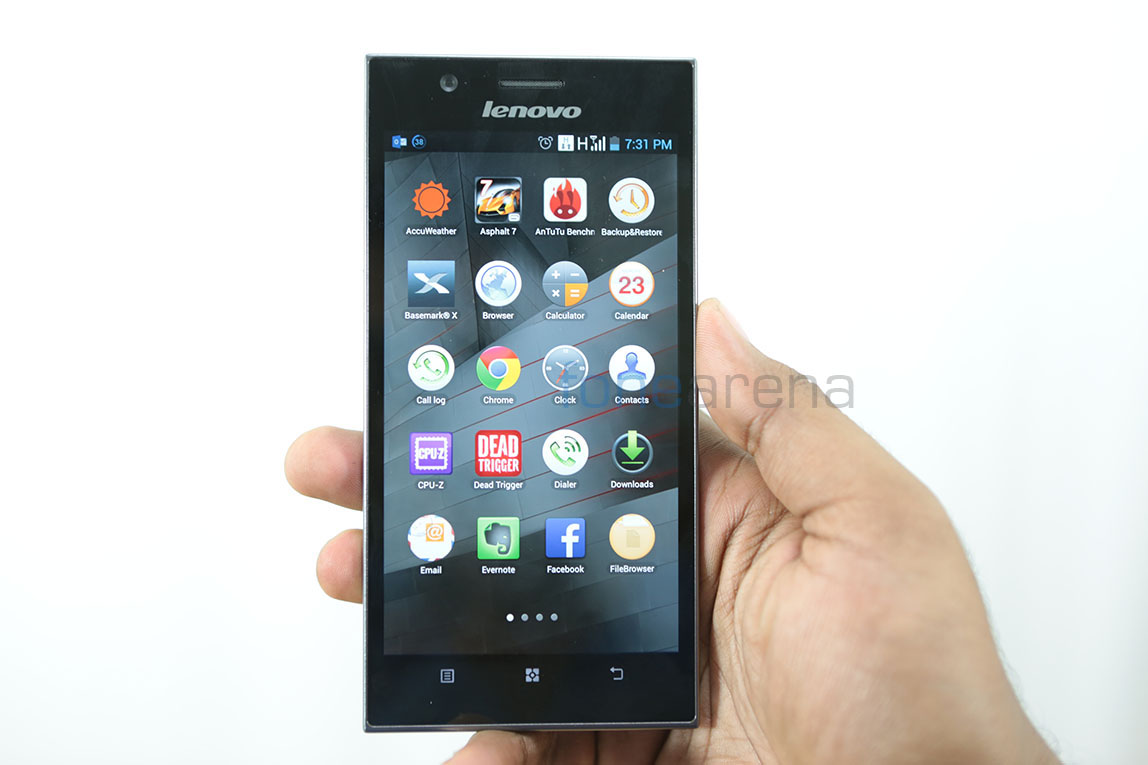
Most of the default apps have been modified to suit Lenovo’s own UI. The contacts, dialer and messaging apps have been merged into one, called the ContactManager. Its “info centre” screen provides useful options for exporting and importing contacts into any medium imaginable, and has SMS export/import options too. Pretty nifty app, and the quick dialing option worked well than most other dialers we have used. However, again, the SMS app had a pretentious “stainless steel” interface element which looked totally out of place. Look at the screenshots and you’ll know what I am talking about.
The file browser has a neatly arranged UI with quick categories for frequently used file formats like Music, Videos, Photos, Docs, Apps and Zip files. With a useful history and quick directory option, and at the same time adhering to Lenovo’s own UI style, this is one of the better file managers we have used, and was certainly similar to what we had seen on the Oppo Find 5.
The SuperGallery app is the companion app to the custom SuperCamera app. While it worked decently well for most tasks, it always crashed on a long press selection, which was weird and frustrating if you are looking for multiple selection. It is a better option to install the stock gallery app from the play store. There are some utility apps for flashlight, sound recording and power management(more on that in the battery life section). The default browser is also heavily modified and has a very chrome-like UI and similar performance, so the gains of a default browser are sort of defeated here. However, the default browser has a full screen mode that actually works well. The FM Radio app was barebones, with options to record and playback stereo FM radio.
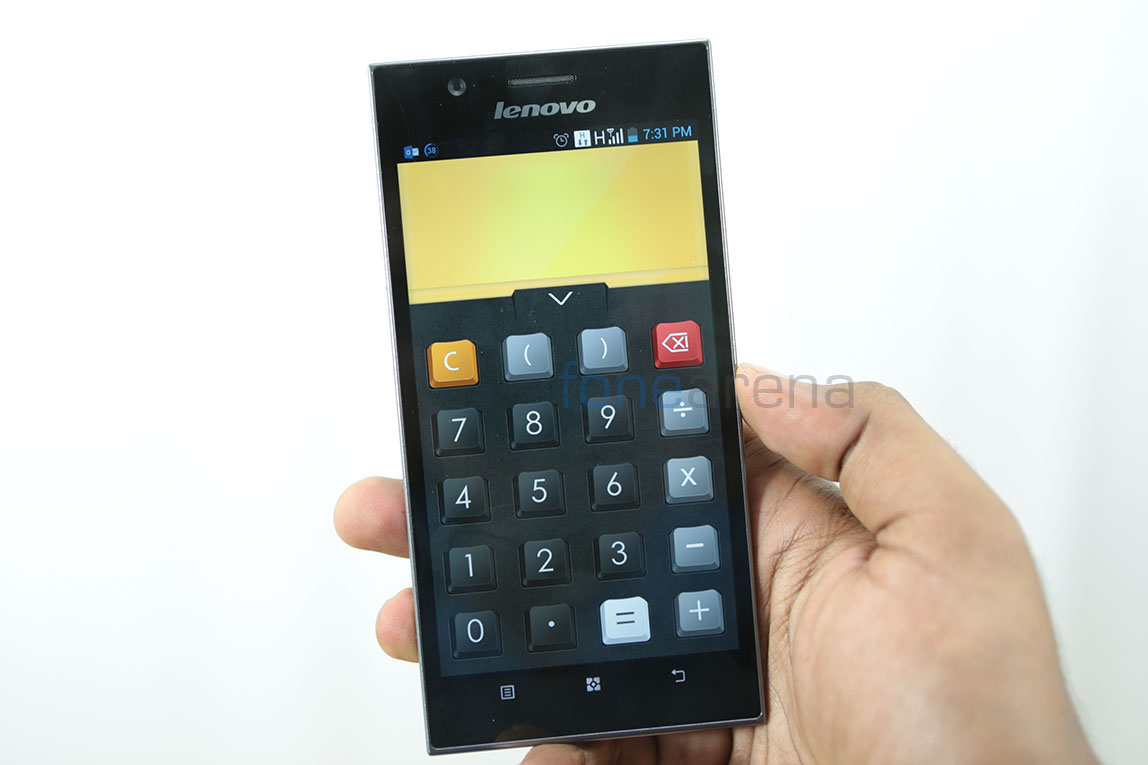
It was weird to note that there was no default music player, and instead we had to resort to the Google Play music app which had a completely holo interface to it, whereas the video app was custom and had barebones playback features. Pre-installed third party apps include Skype, Facebook, Evernote, Accuweather, Kingsoft Office, Touchpal keyboard and UC Browser. These apps are apart from all the default Google apps that come pre-installed.
Battery Life and the Lenovo Power app
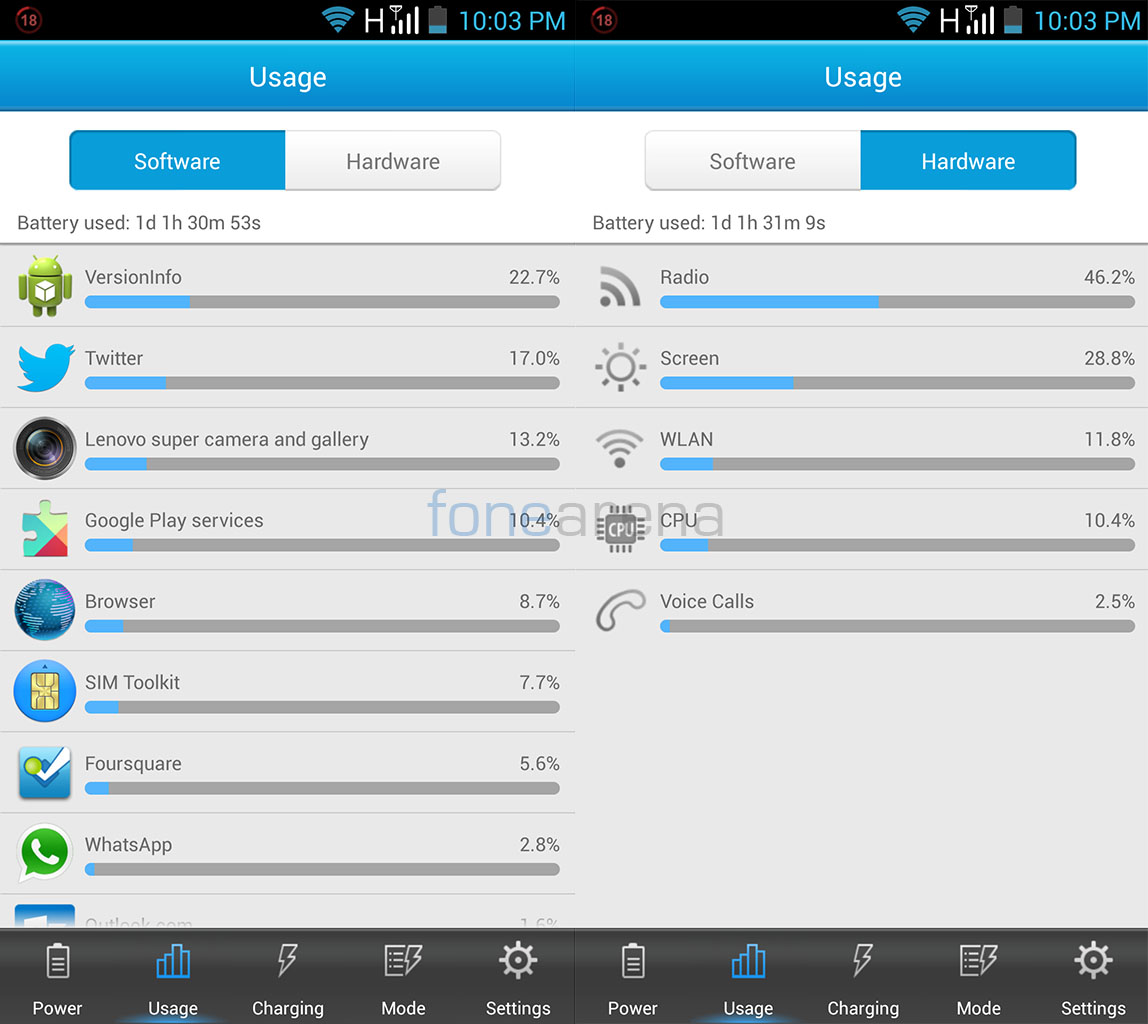
Power management has been taken seriously with the Lenovo K900. In order to extract the maximum juice out of the 2500 mAH Li-Polymer battery, the K900 comes pre-installed with the Lenovo Power app. The app basically runs all the time, with several modes configured for automated power management. You have the endurance rating on the notifications panel as well as the widget and lets you switch off key power draining radios at a touch. You have granular control over every aspect of the device’s battery hogging features and the app gives you the ability to either go with its own pre-configured modes or make your own custom one.
There are also the smart settings denoted by a “S” on the top right that gives options to turn on “screen optimization” “switch mode by power” and “switch mode by time” if needed. The usage menu gives statistics based on software as well as hardware, but a graph is missing. The charging menu gives information on battery state while charging, and of course the mode menu to switch between the different modes as we said earlier. This useful app helps you get through a day at ease, and the capacity was very much an advantage. You are not forced into modes and you can always opt out or change it when needed, and from our daily experience, the battery easily manages to get through a day and if you push it harder, it can last even longer. Overall, the battery life performance has been pretty good for us.
Conclusion
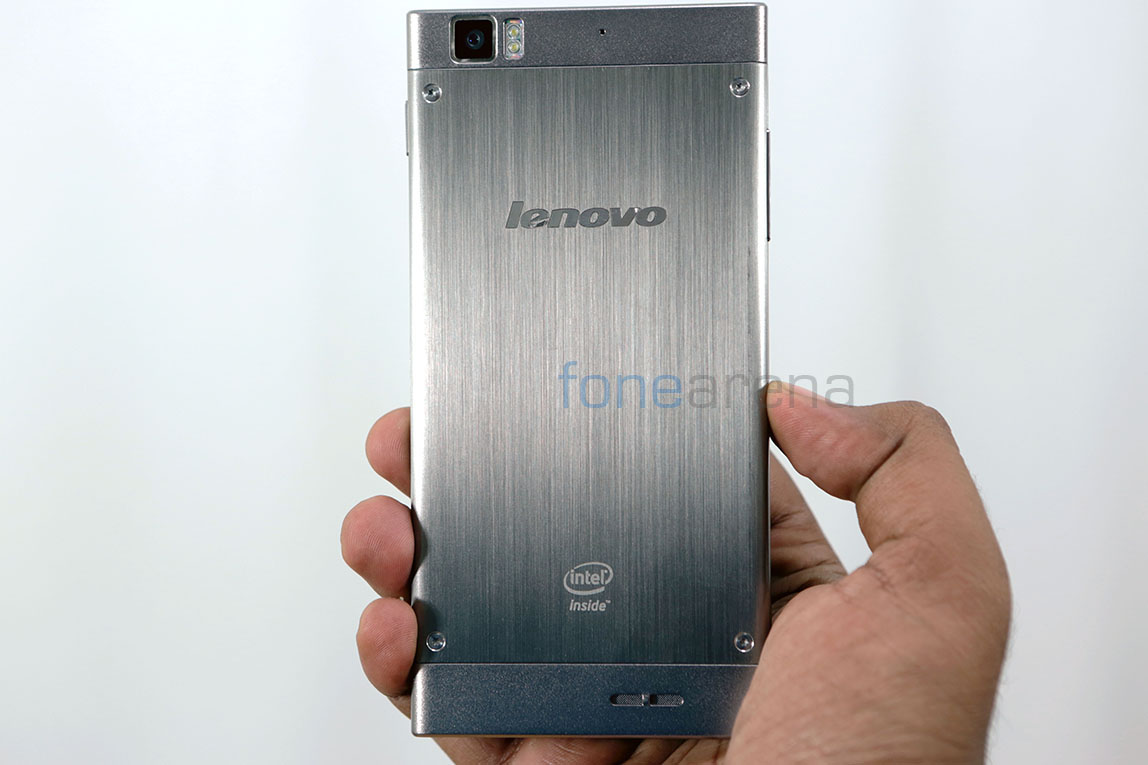
In the end, the K900 is a noteworthy flagship from Lenovo. Small quirks in hardware and software aside, it is a compelling product that offers an amazingly thin and solid build, a superb camera that takes usable low light shots, a great screen for media consumption, fast performance for a big list of growing processor intensive apps and games and most of all, good battery life. However, the wear and tear issues over long term, the huge form factor of the device, some over heating problems, the lack of a micro SD card slot and the general unstable and ugly nature of the default software might be things to consider before buying this phone. But if you can compromise on the aforementioned issues, the K900 is definitely a phablet flagship worthy of your money.
Pros
- Extremely thin and solid build
- Great display
- Superb camera with usable low light shots
- Fast performance
- Good battery life
Cons
- Wear and tear issues
- Unwieldy for normal hands
- Over heating might be a problem for gaming
- Lenovo UI and some default apps
- No micro SD slot





















